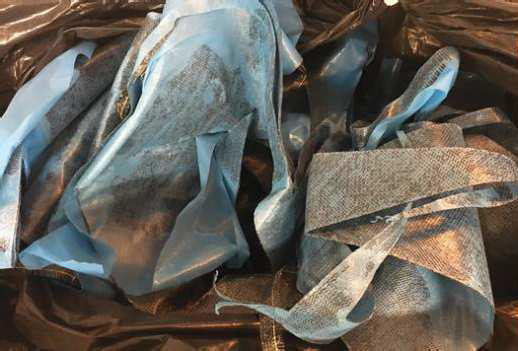RECOMPFI
MANUFACTURE OF STRUCTURAL PARTS FROM PREPREG WASTE
The aeronautics and sporting goods industries use high value-added composite materials based primarily on carbon fibre. The production processes of the parts and components associated with these sectors produce prepreg (or pre-impregnated) waste material that cannot be used in other parts due to its non-repetitive, irregular and generally small geometry. On the other hand, these remnants of prepreg material, which is a flexible material similar to a fabric impregnated with liquid in its initial state and is often not preserved properly, reach their gel point and irreversibly lose their flexibility due to the hardening of the thermosetting resin.
BRONYMEC, whose activity focuses on the construction of components made from long fibre composite material, is leading RECOMPFI. The TEKNIKER Technology Centre has collaborated in this project.

DRIVING FACTOR


 OBJECTIVES
OBJECTIVES
- Reuse high value-added composite waste generated in industries using long fibre composites and thermosetting resins as raw material to manufacture structural components for the land transport sector (automotive, railway) by means of composite forging processes.
- Use composite forging processes to take advantage of waste material.
- Prevent prepreg remnants from becoming a difficult-to-treat waste when hardened
- Enable BRONYMEC to design and manufacture lightweight components; anticipating the future mass entry of composites to replace metal parts in sectors such as the automotive industry.
- Develop lighter structural solutions, reduce energy consumption in transport and limit pollutant emissions from vehicles (cars, buses and trains) manufactured with the technology developed at RECOMPFI.
 RESULTS
RESULTS
- Successful production of various three-dimensional geometries in 100% recycled epoxy and short carbon fibre material (up to 7mm maximum) with very interesting strength and lightweight properties for structural applications.
- Design, construction and testing of tooling-moulds for the manufacture of recycled composite parts.
- Commissioning of the composite forging process.
- Definition of collection and storage processes.
- Characterisation of properties and validation of results of parts made from recycled materials.
 CONCLUSIONS
CONCLUSIONS
- Parts have been successfully manufactured using waste prepreg material that was going to be treated as waste, thus helping to reduce waste.
- The industrialisation of RECOMPFI requires a protocol to be defined for the separation of remnants with and without protective plastic at source and the development of an automatic cutting and grading system for remnants to adapt them to the geometries required in each case of use.
- It is relevant to involve industries that require solutions based on composite materials generated from prepregs (in most cases based on carbon fibre and epoxy) for the production of products with higher added value in the process, such as the sports industry (surfboards, skateboards, skis, helmets, etc.) and the industrial industry for specific applications (e.g. hand tools with a lower mass).
ENVIRONMENTAL
TECHNICAL
ECONOMIC
COMMERCIAL
ON THE MARKET




